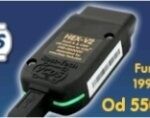After cleaning a DPF on a VW Crafter, resetting the DPF settings with VCDS is crucial. This article guides you through the process and addresses common challenges. We’ll explore the steps involved in resetting the DPF using VCDS, discuss security access issues, and delve into calculating soot accumulation.
Understanding DPF Regeneration and VCDS
Diesel Particulate Filters (DPFs) trap soot from diesel engines. Regular regeneration burns off this soot, but city driving can interrupt this process, leading to clogged DPFs. VCDS (Vag-Com Diagnostic System) allows access to the engine control unit to monitor and reset DPF values after cleaning.
Resetting DPF Settings with VCDS: The Challenge
While VCDS offers detailed diagnostics, resetting the DPF isn’t straightforward. The “Carbon Mass (ECM/DPF Replacement)” adaptation channel within VCDS is key to this process. However, this channel is typically used for new DPF replacements, not cleaning.
Security Access and SKC Codes
Accessing the necessary adaptation channels often requires a security access code (SKC). VW dealers often refuse to provide these codes, citing proprietary information. This poses a significant hurdle for owners attempting DIY DPF cleaning and resets.
Calculating Soot Accumulation After Cleaning
Even after a thorough cleaning, some residual soot remains in the DPF. Accurately calculating this soot build-up is critical for a successful reset. The “Carbon Mass” value in VCDS provides a starting point, measured in grams. Converting this to a grams-per-kilometer figure for input into the “new value” field requires careful calculation based on mileage since cleaning.
Forced Regeneration and Reset Procedure
Performing a forced regeneration before resetting the DPF can help burn off any remaining soot after cleaning. This can be initiated through VCDS. The reset process typically involves entering “1” in the adaptation channel to clear the existing values, then inputting the calculated soot accumulation. However, without the correct SKC, accessing and modifying these values might be impossible.
Alternatives and Considerations
If obtaining the SKC proves impossible, exploring alternative solutions with experienced VCDS users or specialized forums may be necessary. Remember, incorrect values entered into the adaptation channels can negatively impact engine performance.
Conclusion: Navigating the VCDS DPF Reset Process
Cleaning and resetting a DPF with VCDS can be a complex task, particularly due to security access restrictions and the need for precise soot accumulation calculations. While this guide provides a foundational understanding, consulting with experienced professionals or online communities is crucial for successful execution. Thorough research and careful execution are essential to avoid potential engine problems.

